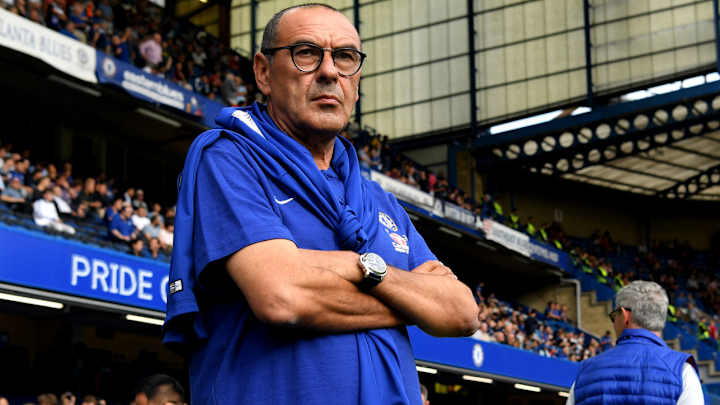Maurizio Sarri's Instant Impact Transforms Chelsea From Conte's Tenure

The theory was that this would be a difficult season for Chelsea. That Maurizio Sarri would found it difficult to impose his method at a club not noted for its patience. That a policy of transfer retrenchment along with the halt called to the stadium redevelopment would undermine morale and that the sense of drift would become insurmountable. The theory, it seems, was wrong, and Chelsea has, yet again, defied expectations.
This is the only constant at Chelsea these days, that what it does makes no sense. Good form becomes bad in the passing of a summer. What looks like hopeless wreckage turns out to be the ideal building blocks for another title challenge. A note of caution is perhaps necessary given how kind the fixture list has been to Chelsea so far, but still, it has won its first five Premier League games for the first time in eight years. Although West Ham United won its first game of the season away at Everton last weekend, this Sunday’s fixture against Manuel Pellegrini’s side at the London Stadium is a major opportunity to make that six in a row.
Careless Man City Squanders Game to Lyon; Juventus Resilience Overcomes Ronaldo Red
The differences from last season are sharp. Most striking, perhaps, is the atmosphere. By the end, the strain on Antonio Conte was clear. Having pushed out Diego Costa with a text message and then failed to bring in the signings he wanted, Conte sent most of last season in a grump, something that rapidly spread from the press-conference room to the technical area. From Christmas, if not before, his exit was certain and all that was left to decide were the terms of his departure. Sarri is not exactly a relaxed character, chewing cigarette butts on the touchline as he tries to give up smoking, but there is a sense of fun about him, a dry and idiosyncratic wit.
In terms of personnel, there are only two changes from last season: Kepa Arrizabalaga has replaced Thibaut Courtois in goal, while Jorginho has come into midfield. It will be some time before Kepa can be regarded as the equal of Courtois, but he is clearly a highly promising keeper, and, without being placed under huge amounts of pressure, seems to have adapted relatively well to the Premier League.
Despite Past Success, Eden Hazard Shows He Has Another Gear to Hit
Jorginho, meanwhile, having been the hub of Sarri’s team at Napoli has already emerged as the key figure in Chelsea’s new-look midfield. A pass success rate of 91.6% suggests how rarely he gives away possession, a remarkable statistic given he averages 101.8 passes per game. There had been doubts as to how he would fit in alongside N’Golo Kante, who had been used to operating at the base of the midfield, but so far the combination has worked well, even if it has led to the France international finding himself in more shooting positions than he us used to–and goal-scoring for all his other strengths, has never been a forte.
The inclusion of Jorginho has been part of a change of shape, away from the 3-4-2-1 or 3-5-1-1 that had characterized the Conte years to the 4-3-3 Sarri has preferred throughout his managerial career. Both coaches favor a pressing game, but with Sarri the focus is much more on attacking, which perhaps explains why, in those five wins to date, Chelsea has kept only one clean sheet.
Liverpool, Inter Milan Win Late, Perpetuate Concerning Themes for PSG, Tottenham in UCL
The back four has looked nothing like as secure as the back three did under Conte, and a part of that has been David Luiz. Although he is very comfortable on the ball, and perhaps necessary for the possession game Sarri wants to play, his limitations as a defender keep on being exposed–perhaps most obviously this season away at Newcastle, when he was caught under a straightforward cross from the right as Joselu stole in front of him.
The passing stats, though, demonstrate a marked change from last season. While the nature of the fixtures Chelsea has played should be borne in mind, it’s still striking that its number of passes per game has gone up from 472 to 669 and that its average possession is up from 55% to 71%, while the number of sequences of 10 passes or more has gone up from 13.5 to 25.2.
And this isn’t futile possession: 63% of all Chelsea’s passes are in the opposition half, as opposed to 56% last season (a jump from 17th in the Premier League rankings to fifth). Chelsea is now averaging 238 passes per game in the final third, up from 173 last season.
Those are major changes already. There will be much greater tests to come. But already Sarri is beginning to impose his vision.
